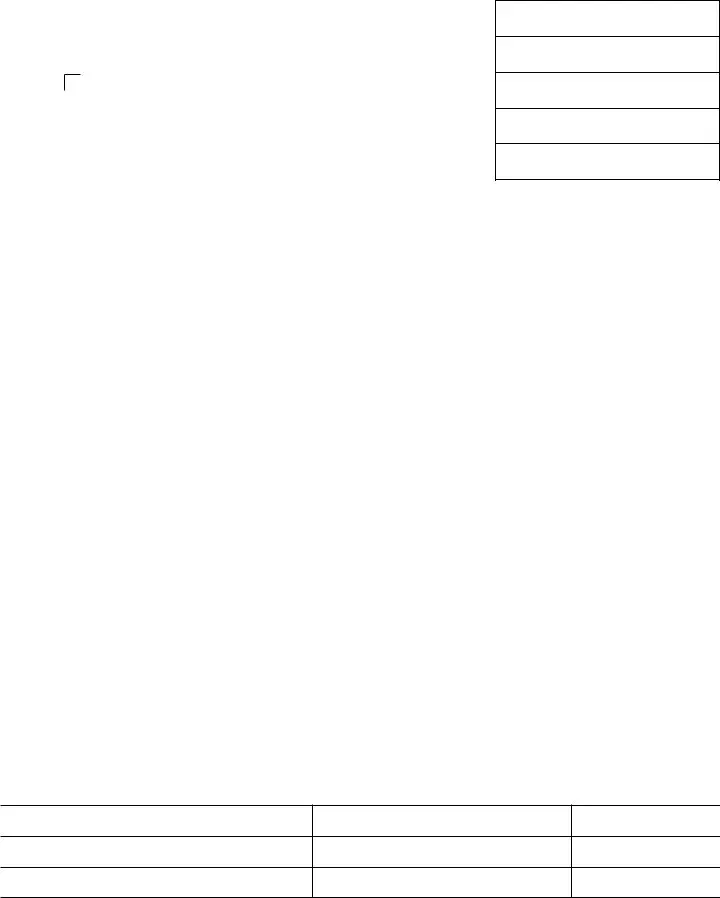General Instructions
Complete the return in blue or black ink only.
Taxpayers must ile a return for each calendar month by the twenty-ifth day of the following month.
Example: The tobacco products tax return for January 1 through
January 31 must be iled on or before February 25.
Taxpayers must ile a return even if no tax is due. All
supporting schedules can be found on the Department of Revenue Services (DRS) website at www.ct.gov/DRS
The owner, a partner, or a principal oficer must sign this
return.
Pay Electronically: Visit www.ct.gov/TSC to use the Taxpayer Service Center (TSC) to make a direct tax
payment. After logging onto the TSC, select the Make Payment Only option and choose a tax type from the drop down box. Using this option authorizes the DRS to electronically withdraw from your bank account (checking or savings) a payment on a date you select up to the due date.
As a reminder, even if you pay electronically you must still ile your return by the due date. Tax not paid on or before the
due date will be subject to penalty and interest.
If you do not pay electronically, make check payable to Commissioner of Revenue Services. DRS may submit
your check to your bank electronically.
Mail to: Department of Revenue Services
State of Connecticut
PO Box 5018
Hartford CT 06102-5018
Deinitions
TOBACCO PRODUCTS means: Cigars, cheroots, stogies, periques, granulated, plug cut, crimp cut, ready rubbed and
other smoking tobacco, cavendish, plug and twist tobacco, ine cut and other chewing tobaccos, shorts, refuse scraps,
clippings, cuttings and sweepings of tobacco, and all other kinds and forms of tobacco prepared in a manner as to be suitable for chewing or smoking in a pipe or otherwise for both
chewing and smoking, but does not include any cigarettes as deined in Conn. Gen. Stat. §12-285.
SNUFF TOBACCO PRODUCTS means: Tobacco products that have imprinted on the packages the designation “snuff” or
“snuff lour” or the federal tax designation “Tax Class M,” or
both.
WHOLESALE SALES PRICE means:
•In the case of a distributor that is the manufacturer of the tobacco products, the price set for these products or, if no price has been set, the wholesale value of these products.
•In the case of a distributor that is not the manufacturer of the tobacco products, the price at which the distributor purchased the products.
Speciic Instructions
Check Box: You must check the appropriate box concerning the purchase of untaxed roll-your-own cigarette tobacco products. If Yes, a completed Schedule E must be attached.
Line 1
Resident Distributor: Enter from Schedule A-1 the
wholesale sales price of tobacco products (excluding snuff tobacco products and cigars in excess of $1.00 per cigar)
purchased, imported, received, or acquired in Connecticut by the distributor.
Nonresident Distributor: Enter from Schedule A-2 the wholesale sales price of tobacco products (excluding snuff
tobacco products and cigars in excess of $1.00 per cigar)
imported into Connecticut by the distributor.
Line 2 - Enter from Schedule B the wholesale sales price
of tobacco products (excluding snuff tobacco products and cigars in excess of $1.00 per cigar) manufactured in
Connecticut by the distributor.
Line 4 - Enter from Schedule C the wholesale sales price
of tobacco products (excluding snuff tobacco products and cigars in excess of $1.00 per cigar) exported from Connecticut
that were imported, received, purchased, acquired, or manufactured in Connecticut by the distributor. Prepare a separate Schedule C for each state of destination. (Use Line 9 and Line 10 to report snuff products and Line 13 and
Line 14 to report cigars in excess of $1.00 per cigar.)
Line 5 - Enter from Schedule D the wholesale sales price
of tobacco products (excluding snuff tobacco products and cigars in excess of $1.00 per cigar) sold to the federal
government that were imported, received, purchased, acquired, or manufactured in Connecticut by the distributor.
Line 9 - Enter from Schedule A-3 or Schedule A-4 the total ounces of snuff tobacco products manufactured, purchased, imported, received, or acquired in Connecticut by the distributor.
Line 10 - Enter from Schedule C-1 the total ounces of snuff tobacco products exported out of Connecticut or sold to the federal government.
Line 13 - Enter from Schedule A-5 the total number of cigars, in excess of $1.00 per cigar, purchased, imported, received,
acquired, or manufactured in Connecticut.
Line 14 - Enter from Schedule C-2 the total number of cigars, in excess of $1.00 per cigar, exported out of Connecticut or
sold to the federal government.
For Further Information
If you need additional information or assistance, please call the Excise Taxes Unit at 860-541-3224, Monday through Friday, 8:30 a.m. to 4:30 p.m.
Forms and Publications: Visit the DRS website at www.ct.gov/DRS to download and print Connecticut tax
forms and publications.
TTY, TDD, and Text Telephone users only may transmit inquiries anytime by calling 860-297-4911.

